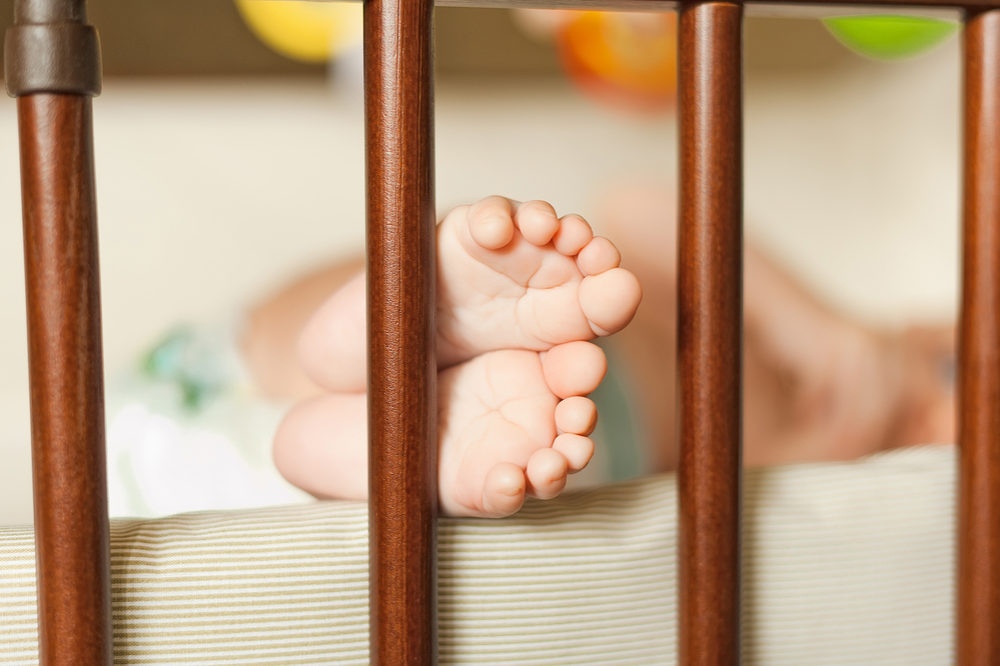Eligible for a Baby Formula lawsuit?
Parents Continue To Place Infants in Unsafe Sleeping Conditions: Study
The CPSC has banned crib bumpers, inclined infant sleepers and other products that are known to place babies at an increased risk of death. However, researchers warn many parents still use unsafe products.

New research suggests that many parents regularly place their infants to sleep in unsafe positions, or in environments with dangerous products that are known to increase the risk of infant deaths, even though they admit they understand the risks.
According to findings published on March 26 in the journal Pediatrics, mothers told researchers that if they used the American Academy of Pediatrics (AAP) recommended sleep practices, neither their infants nor themselves would get much sleep, highlighting the need for more targeted recommendations focused on improving the quality of sleep parents and infants can obtain while still maintaining safe sleep conditions for infants.
Researchers from the Nationwide Children’s Hospital in Columbus, Ohio, conducted surveys and focus groups among 25 mothers from November 2022 to March 2023. The women had infants under six months old and reported using sleeping positions or locations that were not recommended two or more times in the past week.
Mothers reported suffering tension and confusion while trying to make sure their infant got enough sleep, while following the AAP safe sleep guidelines recommended for preventing sudden unexpected infant death (SUID); more commonly known for decades as SIDS (sudden infant death syndrome).
The AAP recommends the ABCs of sleep: Alone, Back, and Crib. Place an infant to sleep on their back, in a crib, alone without contact with another person. They recommend not allowing infants to sleep in adult beds, not holding infants to sleep, and not using unsafe sleep products, like crib bumpers.
Mothers Often Ignore Safe Infant Sleep Guidelines
Despite these warnings, 80% of mothers reported holding or rocking their infants to sleep, and 76% said they put their infants to sleep by feeding them.
Nearly every mother who participated said they knew the ABCs of sleep and intended to follow the guidelines before giving birth to their child. But despite knowing and intending to follow the recommendations, mothers felt the guidelines were unrealistic. They ultimately used unsafe practices because they were more comfortable or helped the infant fall asleep or stay asleep longer.
Nearly all mothers, 96%, said they were confident they could safely hold their infant to soothe them to sleep and 72% said they didn’t think they could get their infant back to sleep without feeding them.
Most mothers said they were less confident getting their baby to sleep if they had to follow the ABCs guidelines strictly.

BABY FORMULA NEC LAWSUITS
Premature infants fed Similac or Enfamil cow's milk formula face an increased risk of necrotizing enterocolitis (NEC) or wrongful death.
Learn More SEE IF YOU QUALIFY FOR COMPENSATIONAccording to the findings, 36% of mothers said their infant had a sleep problem that called for them to use unsafe sleep practices, and 40% said their infant’s lack of sleep negatively affected their own sleep.
The study also indicated mothers were more likely to use unsafe practices when they were awake or when they were sleeping near their infant so they could closely monitor them.
Mothers Knowingly Use Unsafe Crib Furniture
Researchers said 92% of mothers reported using at least one product not approved for infant sleep by the U.S. Consumer Product Safety Commission (CPSC). In most cases, that was either a car seat (56%) or a swing (48%), but also included infant carriers worn by adults.
Recently, the CPSC banned inclined infant sleepers and crib bumpers from the U.S. market after being linked to hundreds of infant deaths. The new rules ban products that exceed an elevation of 10 degrees, which is deemed unsafe for infant sleep and can lead to suffocation and SUIDS.
Mothers said they were especially confused by the recommendations not to use sleep products, since most are advertised on TV as “helpful.” This included infant loungers, many of which have been recalled in recent years, and nursing pillows, especially when mothers were sleep deprived, as is often the case during the early months of motherhood.
More importantly, most mothers said they thought using alternate sleep strategies did not put their infant at a greater risk of suffering SUIDS.
Research published last month indicates most cases of SUIDS, regardless of sleep location, had multiple unsafe sleep practices or factors present. In 76% of cases, the infant was sleeping in an adult bed with the parent when they died.
Researchers said it may be difficult for parents to fully grasp the risk of using unsafe sleep practices, and the ABCs should use terms like “suffocation” instead SUIDS or non-recommended practices. Explaining the real risks to parents is key to improving survival for infants, they concluded.
“Despite awareness of the ABCs, mothers regularly engaged in nonrecommended practices with the goal of improving their own and their infant’s sleep,” the researchers determined. “Interventions focused on improving infant and parental sleep while maintaining sleep safety are needed.”






0 Comments